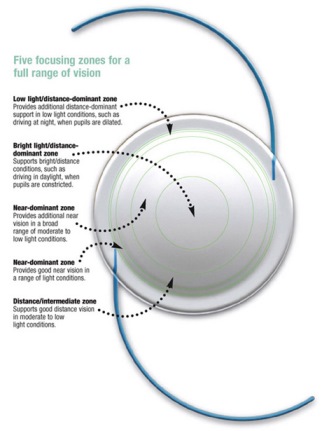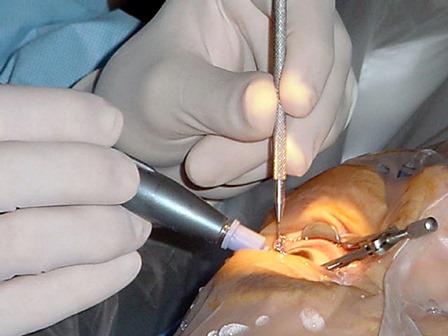Pharma company Abbott has developed a new lens that corrects presbyopia and inferior quality vision problems after cataract removal surgery.
by The Editors | editor@themetrognome.in
The term ‘cataract surgery’ often conjures up scary images of elders and grandparents wearing spectacles, straining to read small text and having trouble with bright lights at night. Cataract surgery is one of the most common surgeries in India, with over 6.2 million procedures done in 2013-14. The condition is also the leading cause of blindness, according to the National Programme for Control of Blindness (NPCB).
Cataracts require replacing the clouded natural lens in the eye with an intraocular lens (IOL). Intraocular lenses (IOLs) today may correct presbyopia (poor ability to focus on near objects), or offer quality vision only at distinct distances, such as near and far, while vision between these distances may be reduced. With almost a third of the world’s cataract procedures estimated to be occurring in India, and with elders having more active lifestyles, the demand for newer technologies that offer better functional vision and independence from spectacles is increasing.
 However, the problems associated with cataract surgery cannot be ignored: patients often complain of experiencing a ‘halo’ around light sources, or a glare in bright lights. This does not allow them to see as clearly as they should. .
However, the problems associated with cataract surgery cannot be ignored: patients often complain of experiencing a ‘halo’ around light sources, or a glare in bright lights. This does not allow them to see as clearly as they should. .
Help is now at hand to combat these issues. Yesterday, the pharma company Abbott announced the launch of its revolutionary technology, the TECNIS Symfony® Extended Range of Vision IOL in India, enabling doctors to offer people with cataracts a continuous range of high-quality functional vision for far, intermediate, and near distances, with a reduced incidence of halo and glare, comparable to a standard monofocal lens.
The TECNIS Symfony® IOL is a first-of-its-kind presbyopia-correcting lens designed to reduce the need for spectacles and provide a significant advancement over traditional IOL technologies. The lens is designed to increase the distance over which an object appears in focus across a continuous range of distances, without sacrificing a person’s visual clarity or contrast.
“As people age, the inability to focus and see clearly is a major challenge. Constantly handling glasses can be cumbersome. This new technology offers vision correction for life. Post cataract surgery, patients have reported getting back vision which mimics the vision they had in their youth,” said Dr Ramamurthy, Chairman, The Eye Foundation, Coimbatore.
Studies in Europe and New Zealand have demonstrated significant improvement in visual acuity with this lens, where a majority of people reported being able to perform daily activities without spectacles, at far, intermediate and near distances.
“The people who come to us for cataract surgery are mostly in their 50s and 60s. They still have an active lifestyle, drive regularly, use computers every day and rely on mobile devices. For them, this technology provides better clarity at near, intermediate and far distances, without having to wear spectacles.” said Dr Sri Ganesh, Chairman and MD, Nethradhama Super Speciality Hospital, Bangalore.
(Pictures courtesy Abbott, en.wikipedia.org)
